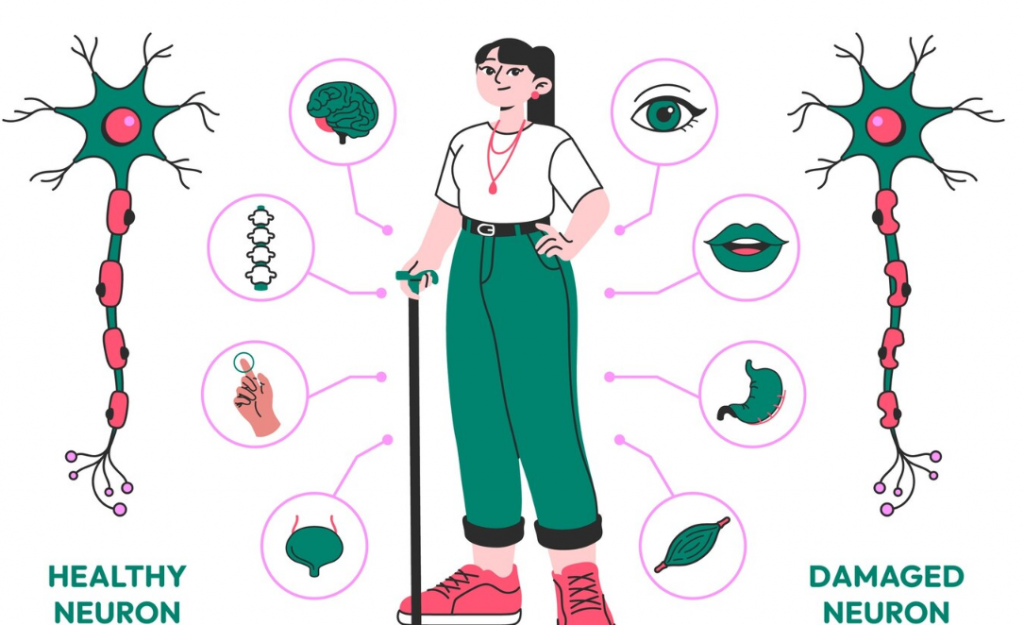The “Oscars of Science” Shine Spotlight on Sclerosis Research

© Freepik
Each year, the Breakthrough Prize, sometimes dubbed the “Oscars of Science”, honors scientists whose discoveries push the boundaries of human knowledge and change lives. Yes, including sclerosis this time around!
In 2025, the prize in Life Sciences was awarded to neurologist Stephen Hauser and epidemiologist Alberto Ascherio for their decades of transformative work on multiple sclerosis (MS), a chronic and often disabling disease that affects nearly 3 million people worldwide.
A Lifelong Mission Sparked by One Patient With Sclerosis
For Dr. Stephen Hauser, the journey into MS research began not with a textbook but with a teenager named Andrea.
In the 1970s, Hauser was a young physician when Andrea came to his clinic. Bright and hopeful, she was also terrified; her body was slowly betraying her due to a disease that science barely understood. Hauser was moved by her strength and haunted by her condition. That experience would become the spark for a career devoted to unraveling the mysteries of MS.

“I wanted to be able to help people like her,” Hauser has said. “But I realized that if we were going to do that, we had to rethink everything we thought we knew about this disease.”
Flipping the Script: From T Cells to B Cells
For years, MS research focused on T cells, a type of white blood cell believed to be the main culprit behind the immune system’s attack on the brain and spinal cord. But Hauser’s investigations pointed to another key player: B cells.
It was a controversial theory at the time. “Many in the field thought it was heretical,” Hauser said. But his persistence paid off. He demonstrated that B cells played a central role in the disease’s progression and that targeting them could dramatically reduce relapses in patients.

His work helped lead to the development of ocrelizumab (Ocrevus), the first treatment for both relapsing and primary progressive MS. Approved in 2017, it marked a turning point in MS care, giving hope to patients who previously had limited options.
Connecting the Dots: Ascherio and the Viral Link to Sclerosis
While Hauser was digging into the immune system’s behavior, Dr. Alberto Ascherio was asking a different question: What causes MS in the first place?
His research at Harvard took an epidemiological approach, tracking long-term health data from millions of people. In a landmark study, Ascherio and his team found a strong connection between MS and Epstein-Barr virus (EBV), a common herpes virus best known for causing mononucleosis.

According to their findings, people who had been infected with EBV were over 30 times more likely to develop MS later in life. The study suggested that the virus might act as a trigger, awakening the autoimmune response that leads to the disease.
It was a bombshell in the sclerosis world. The discovery didn’t just open new avenues for understanding MS; it also pointed toward the possibility of preventing it in the future, perhaps through vaccines targeting EBV.
Beyond the Lab: A Global Impact
The recognition from the Breakthrough Prize doesn’t just honor scientific achievement—it celebrates research that changes lives.
Both Hauser and Ascherio have inspired a new generation of scientists to look at sclerosis from multiple angles: as an immune system malfunction, a viral aftermath, and a disease that’s both deeply personal and medically complex.
Their work has already reshaped how sclerosis is treated and understood. But more importantly, it’s given real hope to millions of people around the world.
Why It Matters
MS is a complex, unpredictable disease that strikes people, often those in the prime of their lives, with symptoms like numbness, vision problems, fatigue, and cognitive changes. There’s no cure yet, but thanks to the contributions of Hauser and Ascherio, patients today have more effective treatments and a clearer understanding of their condition than ever before.
Their award is a reminder that science doesn’t happen overnight. It’s built over decades, fueled by curiosity, compassion, and the relentless pursuit of truth.
In this case, it all started with a teenager named Andrea and two scientists who refused to look away.
You might also want to read: Is Alzheimer’s a Brain Disease? Science Says “No”!



